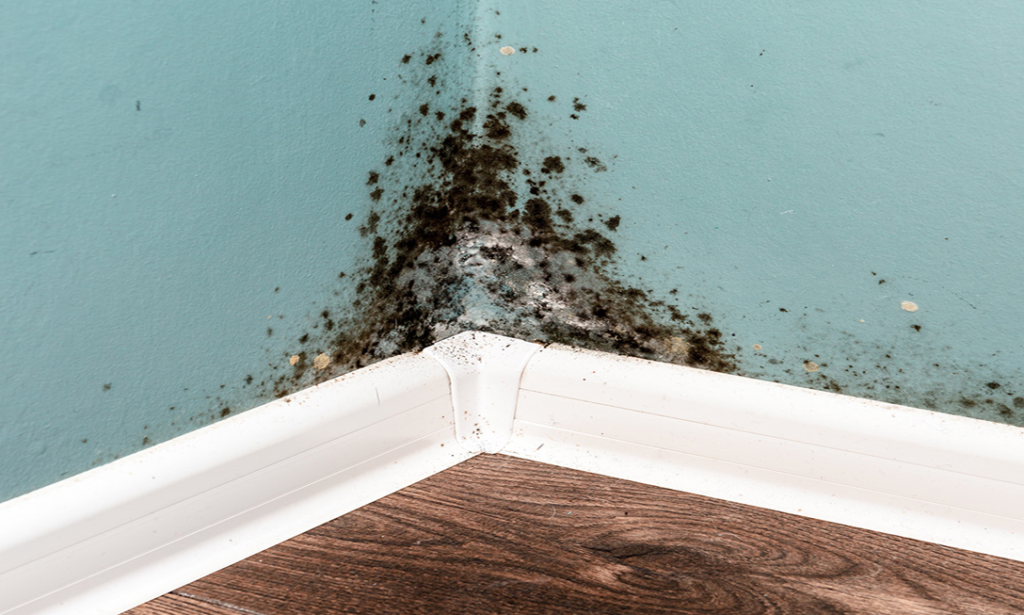Mold Removal/Remediation
Mold grows by releasing its reproductive cells (spores) into the air. Spores are invisible to the naked eye, and mold can spread and grow anywhere in the home as long as moisture and oxygen are present. Common surfaces that harbor mold growth include drywall, insulation, tile, fabrics, and wood.

Aside from the fact that it looks unsightly and unclean, mold has ramifications for people’s health. Mold spores that land in a wet or damp location can begin to grow and can produce allergens, irritants, and potentially toxic substances, affecting indoor air quality and occupant health. Continuous exposure to mold in home environments can cause or worsen homeowners’ pre-existing health conditions.
Mold may not always grow in one area, so you need to figure out how much contamination you’re looking at. Calculating the extent of the contamination will impact how you approach mold removal and cleanup. The goal of mold removal is to clean up mold growing within the home and to avoid exposing homeowners to large amounts of mold.
Toxic mold remediation should always be performed by trained and certified mold professionals since there are health risks associated with toxic mold. Post-remediation testing is also necessary for this type of infestation.
Symptoms
The most common health problems caused by indoor mold are allergy symptoms. Although other and more serious problems may occur, people exposed to mold commonly report problems such as these:
- wheezing/breathing difficulties, nasal and sinus congestion, skin and eye irritation
- sore throat, cough, upper respiratory infections (including sinus)
- burning, watery or reddened eyes, dry, hacking cough, headache
- blurry vision or light sensitivity, memory problems, mood changes
- aches and pains, dermatitis, immune suppression
- fatigue, chills/fever
Risks Associated With Mold
Every person is at risk of becoming infected with a mold-related illness; however, there is a wide variability in how different people are affected by indoor mold. The following people are more likely to be affected more severely and sooner than others:
- infants and children
- elderly people
- individuals with respiratory conditions or sensitivities such as allergies and asthma
- persons having weakened immune systems
Anyone who feels that his or her health has been affected by indoor mold–especially the types of people mentioned above–should contact a medical professional so the condition does not worsen.
Assessments
An assessment is performed on the contaminated area by an Indoor Environmental Professional (IEP)
before the remediation. The assessment provides a guideline for what needs to be done during the
remediation.
The assessment contains the scope of the remediation that defines the general work practices and
minimum requirements for mold remediation. The next section of the assessment states the purpose of
the remediation. The purpose will determine the location of the mold, the extent of mold growth, the
source, and the condition that caused the mold to grow.
REMOVING THE MOLD
Removal and Protection
Never paint over mold with regular household paint. Paint is ineffective at killing mold and may actually
act as food for the mold to feed on. For a non-chemical alternative to biocides and fungicides, a
superheated dry vapor steam technology can be used to both kill and remove mold growths and mold
spores from moldy walls, floors, ceilings, heating/cooling ducts and coils, furniture, and other personal
possessions.
All chemical application is performed by trained mold professional wearing protective clothing and
respirator at all times.
After killing all the mold in the affected area, we remove the mold growths, stains, and mold odors. Even
after the mold is dead, toxic mold can cause allergic reactions and illnesses in some people.
Whenever possible, mold-affected materials should be removed and discarded. Porous materials such as
ceiling tiles and insulation can be nearly impossible to clean and, in most cases, will need to be removed
and replaced.
Using a HEPA filter-equipped vacuum cleaner we eliminate mold spores from the air and furniture,
carpets, clothing, draperies, and the air. Whenever we remove mold-affected materials, we place the
materials in sealed bags or containers so that mold spores cannot contaminate other areas of the home.


